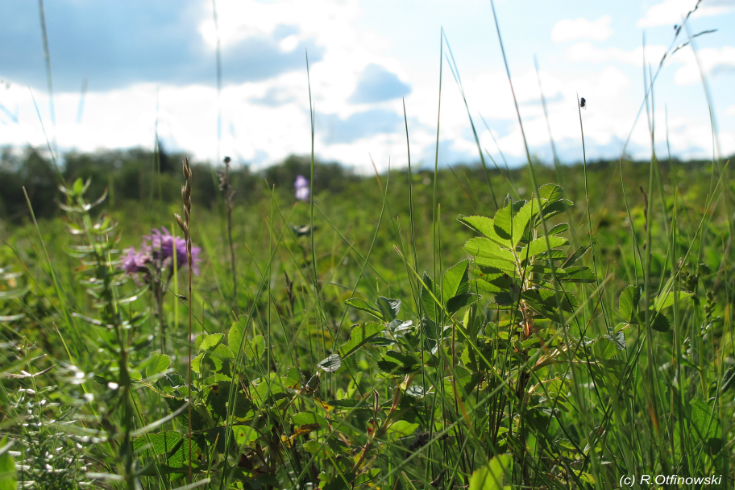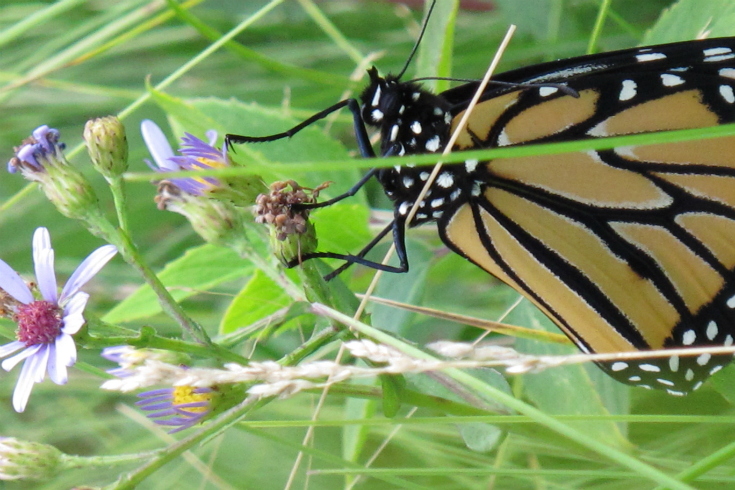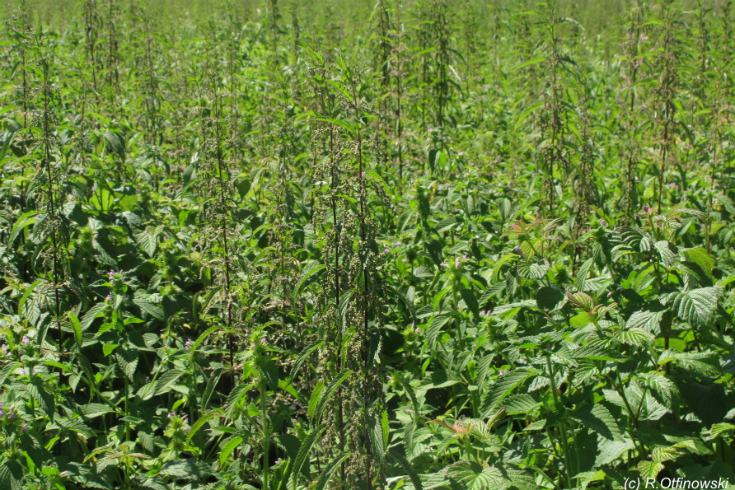Since the earliest settlement of Manitoba, humans continue to affect environmental change and transform the landscapes and the environments of the province. Over time, in the case of the Plains Rough Fescue Prairies, these changes have degraded important ecosystems that remain threatened by human land use and a changing climate*.
Fescue prairies are valued for their biodiversity, which provides food for animals (such as elk) in the winter and a home to many endangered birds, important pollinators, and shelter for many native plants and animals that rely on this habitat to survive.

Victory Coffey, © UWinnipeg
UWinnipeg graduate student, Victory Coffey, is working with Dr. Rafael Otfinowski (biology) on evaluating the natural restoration on an area of rough fescue prairie in Riding Mountain National Park that has been transformed by the establishment of trees. Coffey has been studying how prairie plant and soil communities change over time in areas that have been transformed by trees, in order to determine if natural restoration is effective and to help find plants and soil indicators to evaluate its progress.
Coffey began by first characterizing the existing plant community in each section of restored prairie and has also taken samples of seeds from the soil to evaluate what native plants may grow in the future.
“This is important to evaluate if current restoration efforts are affecting the plant community positively and if there is potential for natural regeneration,” explains Coffey.
Looking at soil microorganisms is also helping Coffey measure the natural restoration of fescue prairies. Soil microorganisms maintain nutrients, recycle dead matter, and regulate plant growth — which makes them important in restoring disturbed prairies.
“The particular soil organisms that I will be looking at are nematodes.” says Coffey. “Nematodes are interesting because they are central organisms in the soil food web and are responsible for regulating the abundance of other soil organisms. For this reason, nematodes have been recognized as very good indicators of soil health.”
In soil, groups of nematodes can be separated based on what they eat. For example, some nematodes feed on plant roots, bacteria, fungi, dead matter, and other soil organisms. This makes them potentially great indicators of changes in soil environments because, based on the types of nematodes present, it can tell you a lot about what other organisms are in the soil. If successful, nematodes have the potential to be used as indicators of restoration progress and the lasting effects that establishing trees could have on prairies.
Coffey and Otfinowski’s nematode identification was done in collaboration with Dr. Mario Tenuta (Canada Research Chair in Soil Ecology, UManitoba).
Coffey is a graduate student in the Bioscience, Technology and Public Policy program at The University of Winnipeg and is also an alum. She completed her Bachelor of Science (4-Year in in Biochemistry) in 2015, and came to work in Otfinowski’s lab in May of 2016, to study restoration ecology. This is only one of the current projects in the Restoration Ecology lab, which is working on a variety of Prairie restoration projects in Manitoba.
*Changing land use, including the suppression of natural fire and the removal of bison grazing, combined with more recent changes in climate have reduced the amount of fescue prairie remaining in Manitoba and Canada, resulting in a loss of many native grasses and flowers that would typically structure this ecosystem. Consequently, many areas have been taken over by shrubs and trees in a process that is commonly referred to as ‘woody encroachment’. This is a problem in many areas because without natural disturbances such as fire and grazing, there is little possibility that these ecosystems can recover back to their former state and active restoration is usually required.








